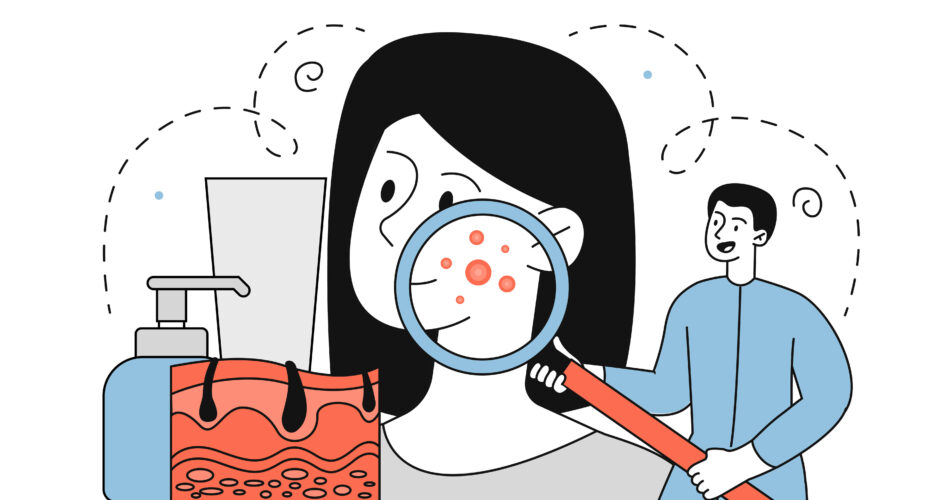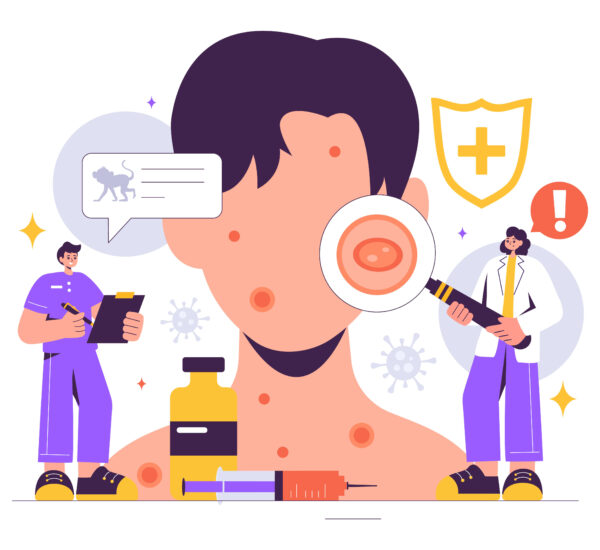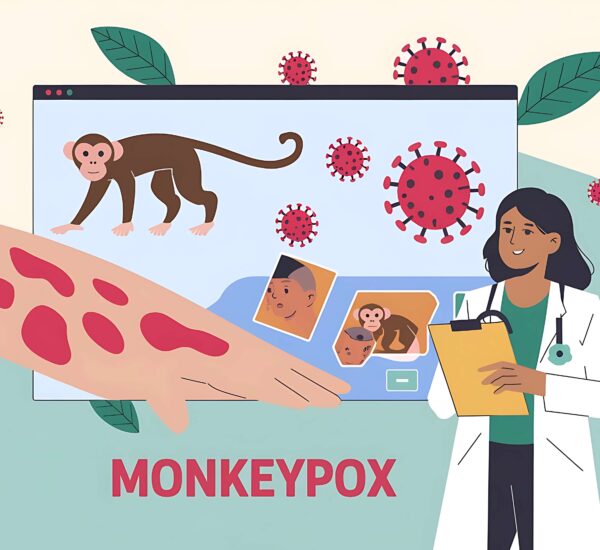Suffering from an infectious disease such as Monkeypox is challenging. This condition is one of the high-risk illnesses that can be transmitted to people in various forms. Knowing how to control the spread of Mpox is a must to keep you and your family safe from its consequences. Fortunately, treating Mpox has never been easier due to the effective initiatives of the health departments.
If you are living in areas where high cases of Monkeypox virus occur, it’s best to take note of the following aspects from this guide. This guide contains treatment facts to manage Mpox symptoms. At the same time, understand the precautions to help prevent contracting the disease.
Let’s begin!
Identifying Mild Symptoms of Mpox

One of the initial aspects to understand about Monkeypox is the common signs indicating the presence of an Mpox infection. When it comes to Mpox symptoms, some of its signs are almost the same as the flu. Their only difference is the presence of rashes or skin lesions. These lesions are highly contagious, especially when the patient is in skin-to-skin contact with other people.
Usually, the first stage of Mpox starts with the following symptoms:
- fever
- chills
- sore throat
- swollen lymph nodes
- fatigue
- muscle aches
- exhaustion or low energy
Mpox Rash: What to Expect
As mentioned, Mpox rash is highly contagious, and should not be underestimated by people. This type of rash is one of the most distinctive features of severe Mpox. It typically starts as small red bumps that evolve into fluid-filled blisters before scabbing over revealing a new layer of skin.
Common locations of Mpox rash at the different parts of the body:
- face
- chest
- soles of the feet
- palms of the hands
- groin
- genitals
While the rash can be itchy and uncomfortable, proper skin care can help prevent infections and promote faster healing. However, better outcomes can occur if you understand the duration of Mpox lesions. Usually, Mpox infection lasts from 2 to 4 weeks. This severe disease can have an incubation period of at least one day after possible exposure to the viral infection, then early symptoms will occur.
Complications of Mpox

The recent outbreak of Mpox in the Philippines led to the close monitoring of health departments to ensure public protection from a possible widespread of the serious illness. The last recorded case of Mpox this year was on September 16, with 18 confirmed cases. Fortunately, the DOH confirmed that the cases recorded are from the less severe clade of Mpox.
Regardless of the type of Mpox virus present, that doesn’t mean that the public should let their guard down. If the virus is not detected early, it can lead to possible health complications in the future.
- Skin: The rashes can affect the skin leading to infection when not managed well.
- Brain: Neurological complications are one of the rare illnesses that happen due to Mpox (e.g., encephalitis).
- Lungs: Infection can lead to heavy breathing and cloudiness of the lungs, which leads to pneumonia.
- Heart: The heart can also be affected by the infection leading to a severe illness like myocarditis.
Unfortunately, pregnant people are also at a higher risk of Mpox infection due to their weakened immune system. If they are confirmed to be infected with Mpox, their pregnancy can be at risk. Complications such as stillbirth and loss of the pregnancy can happen.
Managing Mpox Symptoms at Home

Considering the mentioned complications of Mpox, it is vital for everyone to be knowledgeable about Monkeypox. Being aware of the symptoms and the complications can help improve their well-being. In that case, detection of Mpox can help people to begin treating Mpox.
Management of Mpox at home is one of the ideal initiatives promoted by DOH. Staying at home promotes a lesser risk of transmission. Furthermore, the patient with Mpox can recuperate better and build their immune system.
While Mpox management at home is part of the healing process, not all cases of Mpox can be handled in such a way. Some cases can be more severe, which means access to health care is a must. However, if the case is considered mild, then home healing techniques can suffice.
Medications for Pain and Fever
Treatment of Mpox symptoms at home must always include effective over-the-counter medications. Some of these medicines are commonly used for pain and fever like the following:
- Paracetamol: This is commonly used to reduce fever and relieve headaches and muscle pain.
- Ibuprofen: Another option for managing inflammation, fever, and discomfort.
Always follow the recommended dosage on the medication packaging, and consult a healthcare provider if you are unsure about using these treatments.
Skin Care for Mpox Rash
Aside from medications, proper care of the Mpox rash is essential for preventing infections and ensuring a smooth recovery. With the threat of skin infection due to skin lesions, it’s best to practice proper hygiene to prevent the accumulation of bacteria in the wounds. Check out the following options to ensure skin care:
- Keep lesions clean: Gently wash the affected areas with mild soap and water to prevent infections.
- Avoid scratching: Scratching the lesions can cause secondary infections and scarring. If the itching is severe, ask a healthcare provider for recommendations on itch relief.
- Use topical creams: To reduce irritation, you can apply fragrance-free moisturizers to the skin. Some people may also benefit from soothing lotions like calamine.
Please take note that some cases involve patients feeling relief through warm baths. However, if you think this doesn’t apply to you, then it’s best to opt out of using warm water. At the same time, always monitor the rash for signs of infection, such as increased redness, swelling, or pus. If these occur, seek medical advice.
Stay Hydrated and Rest
Lastly, allowing your body to recover should be your priority throughout your healing process. One of the best ways to support your body while recovering from Mpox is to get plenty of rest and stay hydrated. Dehydration can exacerbate symptoms, so drink water, herbal teas, and clear broths. If fever or sweating is contributing to fluid loss, consider using electrolyte drinks to replenish what’s lost.
Preventing the Spread of Mpox at Home
Preventing the spread of the Mpox virus in your home is a key part of managing the disease. Since the virus can spread through close contact with skin lesions or contaminated objects, taking steps to reduce transmission is crucial.
Isolation Guidelines
Isolation is essential to avoid spreading the virus to others in your household. Here are some tips for effective infection prevention:
- Stay in a designated room: Use a separate room and bathroom if possible.
- Limit interaction: Avoid physical contact with other people and pets. If interaction is necessary, wear a mask and maintain distance.
- Use disposable gloves: If you need to handle contaminated objects like clothing or bedding, wear gloves to protect yourself and others.
The isolation period should continue until all lesions have scabbed over and no new lesions are forming.
Cleaning and Disinfecting
To prevent the virus from spreading through contaminated surfaces, maintain a cleaning routine:
- Disinfect frequently touched surfaces: Use household disinfectants to clean doorknobs, countertops, and light switches.
- Wash laundry separately: Wash clothing, bedding, and towels used by the infected person separately from other household items. Use hot water and detergent to kill the virus effectively.
Following these hygiene practices will reduce the risk of transmission within your household.
Frequently Asked Questions
How to verify if I have Mpox?
Monkeypox is an infectious disease condition that has symptoms quite similar to other conditions. In that case, it’s best to seek help from your local health center or your healthcare provider. They will commonly recommend undergoing a polymerase chain reaction test.
Aside from that, you can also check out some possible reasons why you might have Mpox. Some of the common reasons for contracting this disease are through physical contact, unprotected sexual activity, and exposure to infectious respiratory particles. If you have been exposed to the following aspects, then experienced Mpox symptoms the following days, chances are you might be infected with Mpox.
Can I treat mild Mpox without seeing a doctor?
Yes, mild Mpox cases can generally be managed at home with supportive care. However, it’s important to monitor your symptoms and consult a healthcare provider if your condition worsens or if you belong to a high-risk group.
Can saltwater rinses help heal the number of lesions on the skin?
Home remedies like saltwater for treating Mpox lesions can be effective for some people, however, side effects can still occur. It is always recommended to consult a healthcare provider for proper treatment and guidance on managing the symptoms at home. Remember, maintaining good hygiene practices and seeking medical advice are key in treating Mpox.
Conclusion
Treating Mpox at home is possible by remembering the following aspects mentioned above. Such techniques are crucial as these initiatives focus on managing the mild symptoms, and help with immediate interventions to prevent possible complications. At the same time, home treatment of Mpox is an important practice as it can help avoid further spreading of the virus.
However, please take note that treating Mpox at home is only applicable if the case of Mpox is manageable. If certain situations arise that need the intervention of health workers, it’s best to visit the nearest hospital now.
Book an online consultation with an infectious disease doctor today!



